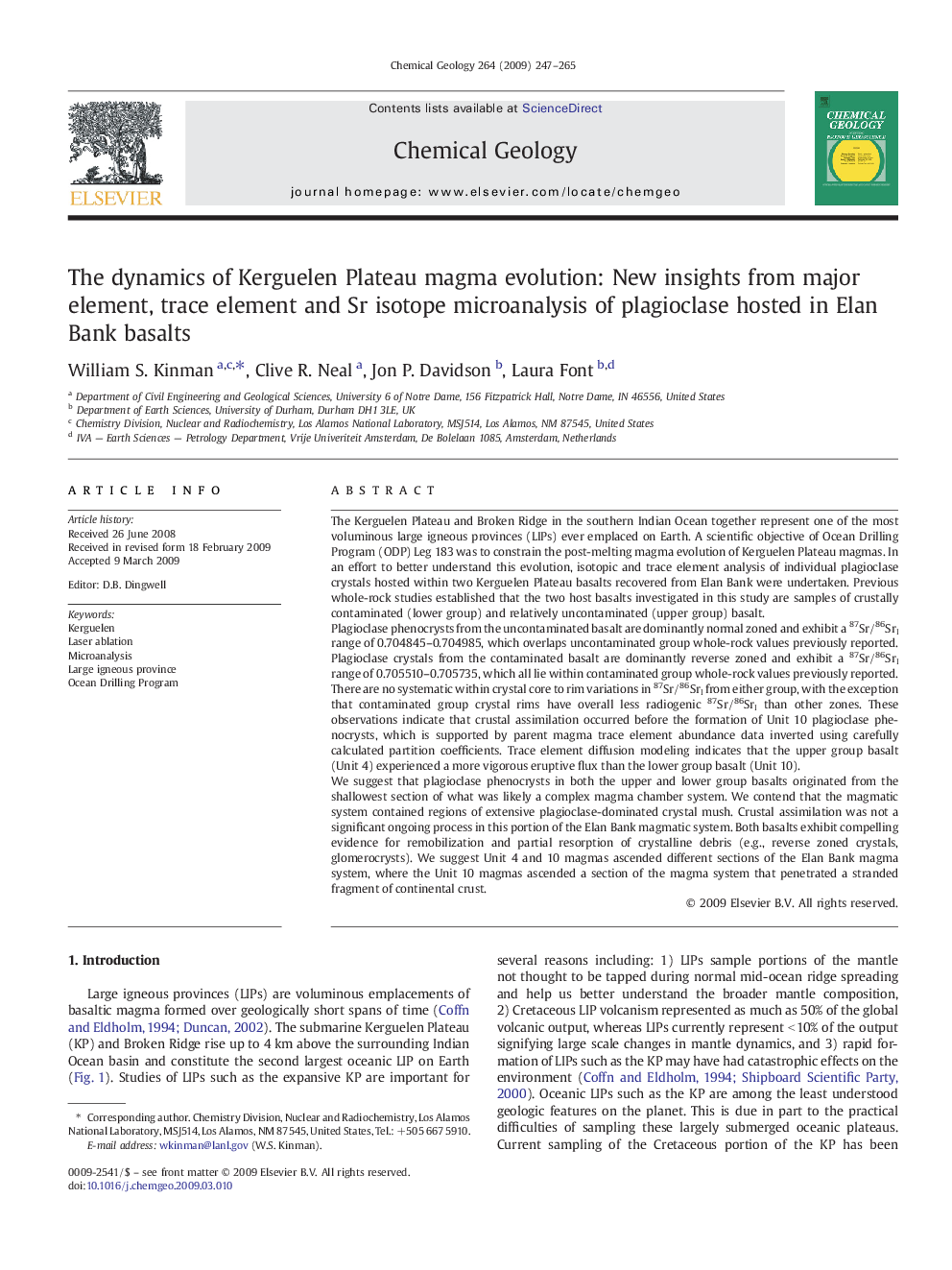| کد مقاله | کد نشریه | سال انتشار | مقاله انگلیسی | نسخه تمام متن |
|---|---|---|---|---|
| 4700314 | 1637705 | 2009 | 19 صفحه PDF | دانلود رایگان |

The Kerguelen Plateau and Broken Ridge in the southern Indian Ocean together represent one of the most voluminous large igneous provinces (LIPs) ever emplaced on Earth. A scientific objective of Ocean Drilling Program (ODP) Leg 183 was to constrain the post-melting magma evolution of Kerguelen Plateau magmas. In an effort to better understand this evolution, isotopic and trace element analysis of individual plagioclase crystals hosted within two Kerguelen Plateau basalts recovered from Elan Bank were undertaken. Previous whole-rock studies established that the two host basalts investigated in this study are samples of crustally contaminated (lower group) and relatively uncontaminated (upper group) basalt.Plagioclase phenocrysts from the uncontaminated basalt are dominantly normal zoned and exhibit a 87Sr/86SrI range of 0.704845–0.704985, which overlaps uncontaminated group whole-rock values previously reported. Plagioclase crystals from the contaminated basalt are dominantly reverse zoned and exhibit a 87Sr/86SrI range of 0.705510–0.705735, which all lie within contaminated group whole-rock values previously reported. There are no systematic within crystal core to rim variations in 87Sr/86SrI from either group, with the exception that contaminated group crystal rims have overall less radiogenic 87Sr/86SrI than other zones. These observations indicate that crustal assimilation occurred before the formation of Unit 10 plagioclase phenocrysts, which is supported by parent magma trace element abundance data inverted using carefully calculated partition coefficients. Trace element diffusion modeling indicates that the upper group basalt (Unit 4) experienced a more vigorous eruptive flux than the lower group basalt (Unit 10).We suggest that plagioclase phenocrysts in both the upper and lower group basalts originated from the shallowest section of what was likely a complex magma chamber system. We contend that the magmatic system contained regions of extensive plagioclase-dominated crystal mush. Crustal assimilation was not a significant ongoing process in this portion of the Elan Bank magmatic system. Both basalts exhibit compelling evidence for remobilization and partial resorption of crystalline debris (e.g., reverse zoned crystals, glomerocrysts). We suggest Unit 4 and 10 magmas ascended different sections of the Elan Bank magma system, where the Unit 10 magmas ascended a section of the magma system that penetrated a stranded fragment of continental crust.
Journal: Chemical Geology - Volume 264, Issues 1–4, 30 June 2009, Pages 247–265